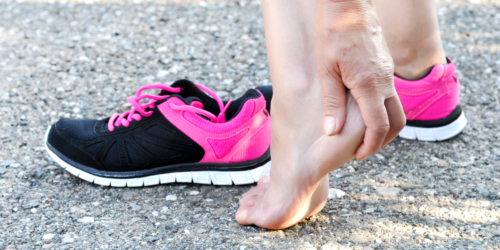The Achilles (uh-KILL-eez) tendon is the largest tendon in your body. It is a strong band of tissue that connects your calf muscle, at the back of your lower leg, to your heel bone. When the Achilles tendon has an excessive amount of stress put on it, it becomes inflamed. This condition is known as Achilles tendonitis and in some cases, Achilles tendinitis. If the condition is not treated, it may cause the Achilles tendon to rupture, a serious injury that requires immediate attention.
Causes of Achilles Tendonitis
When there’s an excessive amount of strain or repetitive strain on the tendon, it can result in Achilles tendonitis. Most often this condition is frequently diagnosed when athletes increase their level of activity or in individuals who exercise, but not on a regular basis. Older patients are most often at risk because of the normal aging of their tendons. Movements that contribute to the strain can be as simple as running or can include exercises such as running or jumping.
Symptoms of Achilles Tendonitis
The pain you usually experience with Achilles tendonitis happens after you have been physically active. It can start as a mild ache in your calf or pain just above your heel. Other symptoms may include:
- Pain that increases after running or climbing stairs
- Pain when you are walking
- Tenderness or swelling in the calf or heel area
- Stiffness or tenderness in the calf or heel area when you wake up
If you are experiencing severe pain in the area of the Achilles tendon, you may have a ruptured tendon and should seek medical attention immediately.
Diagnosis of Achilles Tendonitis
Achilles tendonitis is usually diagnosed by a physical examination that includes assessing flexibility, determining the range of motion, testing reflexes, inspecting the injury site, and possibly one or more of the following imaging tests to rule out the possibility of a rupture, which requires surgical intervention:
- X-rays
- MRI scan
- Ultrasound
Treatment of Achilles Tendonitis
Achilles tendonitis treatment usually begins conservatively. This is often done at home with rest, applications of ice, elevating the affected area in combination with over-the-counter pain and anti-inflammatory medication. Other treatment modalities include:
- Orthotics or shoe inserts provide a cushion to relieve pressure
- Assistive devices such as a walking boot, crutches, or cane
- Prescribed medication
- Shockwave therapy
- Physical therapy to help stretch, strengthen, and heal the Achilles tendon and support area
If diagnostic tests indicate that the Achilles tendon has been torn or ruptured, or if conservative treatments don’t seem to be helping, a surgical repair of the Achilles tendon may be necessary. Most often patients will need physical therapy after surgery so they can regain their strength and flexibility.
There’s a fraternity of basketball players in the NBA who have suffered a rupture of their Achilles tendon, click here to read their story


